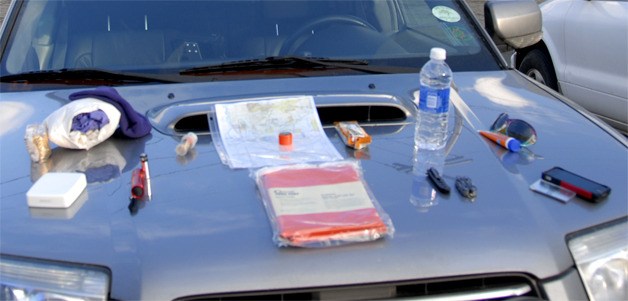On the next beautiful day, when you’re considering a nice long hike up Little Si, consider your safety first. Instead of grabbing a water bottle, granola bar and your mobile phone, grab your “10 essentials.”
The 10 essentials, as Glenn Wallace, spokesperson for King County Search and Rescue, calls them are:
• Insulation (extra layers of clothing plus a hat)
• Emergency shelter (a small tarp or tent with ropes is adequate)
• Hydration (extra water)
• Illumination (flashlight and extra batteries)
• Navigation (a map and compass, or a GPS)
• Fire (waterproof matches and fire starter)
• First-aid supplies (bandages, daily medications, etc)
• Repair kit and tools (knife or multi-tool and duct tape)
• Nutrition (food)
• Sun protection (sunglasses and sunscreen)
“They don’t have to be expensive, and they don’t have to be big,” says Wallace, but you’ll want them with you in case the unexpected happens.
“What happens to most people here is they get wet,” he said, and a wet person without a dry layer to put on, without shelter to get out of the rain, and without the means to make a fire, can quickly develop hypothermia.
You might have noticed that “mobile phone” is not on the list — actually, it’s the 11th essential, but Wallace said people shouldn’t feel completely safe just because they have a phone with them.
“The cell phone isn’t going to protect you if you can’t get a signal,” he explained. The mountains can reflect signals, making it difficult to determine a phone’s location, too.
He recommends carrying a personal beacon, and there are several on the market. His own beacon, he said was about $275, well worth the cost when compared to the potential cost of not having one.
Wallace also suggests carrying a mirror or other signalling device — the back of a blank CD is a perfect reflector, plus you can use the hole in the center to aim it, he says — and to call 9-1-1 as soon as you think you’re lost or become injured. Then, stay put. Also, before you head out, make sure someone knows where you’re going.



